Is Sydney leaving Melbourne for dead?
 It’s an ancient debate that refuses to go away: Melbourne versus Sydney. Is the power in media and advertising drifting up north, asks Robin Hicks
It’s an ancient debate that refuses to go away: Melbourne versus Sydney. Is the power in media and advertising drifting up north, asks Robin Hicks
The first story I wrote since moving from Sydney to Melbourne six months ago was on the closure of DraftFCB Melbourne, a decent but painfully shy ad agency with a 50-year history that, as it turned out, was too reliant on one major client.
A fortnight later, I covered Publicis Mojo’s Melbourne office making a bunch of redundancies. Some jobs were relocated to Sydney, leaving the once-great office on Southbank with eight staff, down from more than 100 just three years ago.
This news came just three months after the collapse of another ‘once-great’ agency brand The Campaign Palace, which started life on Melbourne’s Cecil Street more than four decades ago.
(By the way, this is a long read. You can read it in the format we intended on the new weekly tablet edition of Encore, on either iPad or Android)
A wobbly ad market hasn’t made it easy for Sydney agencies either. But I was beginning to think my arrival in Melbourne was some sort of jinx.
Were these Melbourne mishaps cases of bad management, or a failure to change with the times? Or signs that Melbourne is a shrinking market with the power heading up to Sydney?
Pitch doctor Darren Woolley, himself a Melburnian, caused horrified gasps in the audience at Mumbrella Question Time in Melbourne some months ago when he described the Victorian capital as “the new Adelaide”. Not unknown to like an audience was Woolley merely seeking attention, or did he have a point?
The media migration to Sydney
From a media perspective, Woolley is probably right. Over the last 15 years, the country’s biggest media owners, such as Network Seven and later rival Nine, have moved their power bases from Melbourne to Sydney. The two newspaper giants News Limited and Fairfax are Sydney-based. So is internet giant Google and magazine publisher ACP (now Bauer Media).
This has a knock-on effect on public relations. “PR agencies usually want to launch campaigns first in Sydney,” says Steve O’Farrell of Melbourne agency The Royals. “Since the media is based up there, it’s easier to get a story.”
Media agencies have followed the media owners, with the exception of Australia’s biggest buyer Aegis Media, which is headquartered on South Melbourne’s York Street. This is largely to do with the influence of its boss Harold Mitchell.
“Harold is so influential that clients will go to see him, rather than the other way around,” says one rival of the man voted Melbourne’s most powerful person by The Power Index last year.
Most global media agency network bosses see Sydney as being more important strategically. “Global visitors always do Sydney. They sometimes do Melbourne,” points out Starcom Australia’s chairman John Sintras.
Are ad dollars following the media northwards?
What should settle the argument is ad spend. Is there a trend for media money shifting south to north, too?
Reliable numbers are hard to come by. Media agencies are reluctant to share their data, and the Standard Media Index does not break down spend by market – although there are plans to do so in February or March of this year.
Nielsen only breaks down ad spend by state, not by city. It estimates that spend in ‘main media’ (not counting digital, which PwC predicts will be a bigger medium than TV in Australia some time this year) was $3.1bn in New South Wales and $2.3bn in Victoria between October 2010 and September 2011.
A year on, spend has fallen in both markets. But the decline has been steeper in NSW. It fell by 6.5% to $2.9bn between October 2011 and September 2012, while Victoria’s ad market shrunk by 4.3%, to $2.2m.
As the bigger city by population, you’d expect ad spend to be higher in Sydney – there are more people to reach. But as Melbourne’s population is growing faster (Melbourne’s population, now 4.2m, has been growing at a rate of 1.7% over the last decade; Sydney’s, now 4.6m, by 1.1%. By 2038, demographers say Melbourne will be bigger than Sydney, as it was in the days of the Victorian gold rush and ‘Marvelous Melbourne’ more than a century ago) you’d expect ad spend to be catching up, albeit gradually.
But over the last five years, there has been little to separate the two ad markets, observes media analyst Steve Allen of Fusion Strategy. Only in some media, Melbourne has been closing the gap.
There are no obvious trends in TV. Sydney has 37% of the Australian TV advertising market, Melbourne 27%. That has not changed much – although it should, says Allen.
“CPMs [cost per thousand, a media price unit] for free-to-air TV in Sydney are outrageous. Sydney was the market that Foxtel attacked forcibly first, and the pay-TV operator now has a higher share than in other markets – that’s buggered the CPMs up,” he says.
But media negotiators don’t seem willing or able to allow the networks to redistribute share from Sydney to other markets, he says.
“A simple transaction would change the status quo, but I can’t imagine the TV networks playing ball. And there’s no sign of this happening. Longer term, the structural situation should be squared, just as CPMs in radio have corrected themselves over time.”
Melbourne’s radio market has gained some ground on Sydney in recent times, though the shift has been “nearly imperceptible”, says Allen.
Between 2004 and 2011, according to Commercial Economic Advisory Service of Australia, NSW’s share of national radio revenue grew 1.6 percentage points from 23.3% to 24.9%. Actual spend grew 33%, $79.9m to $105.9m. Victorian share of spend rose 1.8 percentage points from 15.7% to 17.5%. Actual spend was up 38%, from $53.8m to $74.5m.
“Historically, the gap between Sydney and Melbourne’s radio market was a lot bigger, in favour of Sydney,” says Allen. “It was said – though never out loud – that the size and power of Harold [Mitchell] kept rates low in Melbourne, because he’s such a tough negotiator.”
That could be unfair, Allen says. “Perhaps weak sales directors discounted too much. But now it appears that Melbourne’s radio market has gained lost ground, albeit by just a share point or two.”
Indeed, Melbourne’s radio market briefly eclipsed Sydney’s in December. According to figures released by Commercial Radio Australia, Melbourne shrank, but Sydney took a bigger hit due in part to the Today Network’s Royal prank call, which cost Sydney station 2Day FM serious advertising dollars.
Is Sydney hogging the headlines?
Melburnians are fond of arguing that the successes of Sydney agencies are magnified because they are more inclined to crow in the trade press. And because the trades are mostly Sydney-based, they have a natural tendency (Melburnians use the word bias) to report Sydney stories.
“If I read another fucking story about Droga this or Droga that, I’ll go crazy,” said Sean Cummins, boss of CumminsRoss, at Mumbrella Question Time.
As a Melburnian and the CEO of a Melbourne-based agency, and in front a crowd populated with Melbourne clients, Cummins is bound to talk up the local market. But his argument is that there are plenty of Melbourne agencies with good stories to tell. It’s just that plenty of them go unreported.
Of the press releases Mumbrella receives on a daily basis, I would guess that roughly two thirds are from Sydney sources. And if you look at the big advertising news stories in 2012, Sydney agencies dominated the headlines, particularly for account moves. In 2012, 67% of major creative account moves in Australia happened in Sydney, up from 60% in 2011, according to The Agency Register.
Did some Melbourne moves go unreported? Or, as the theory goes, is Sydney’s new business scene more active than in Melbourne, where clients tend to be less promiscuous?
‘Melbourne is a relationship town’ is a phrase I have heard often (although the word ‘town’ seems to stand out more than ‘relationship’). Though this is certainly true, Melbourne was the busier city for media moves last year. While in 2011 95% of media account shifts took place in Sydney, that ratio dipped to 43% in 2012, with NAB, ANZ, Holden and the Victorian government reviewing media contracts in Melbourne.
Is Melbourne producing better ads?
Things even up when you look at the best ad campaigns in Australia right now. In my view, Melbourne agencies outclassed their Sydney rivals for creative output last year and, some (even Sydneysiders) argue, have been doing so for some time.
“Where the dollars are, and where the money is moving, is not a fair reflection of where the best quality of work is being done in Australia,” says The Agency Register’s Sydney-based MD Peter McDonald. “There is not as much worldclass work coming out of Sydney, relative to its size, in my view. This could be because clients tend to move around more in Sydney, and suffer from a lack of consistency.”
It was the Sydney office of Havas Worldwide that made a hero of Brad Pitt’s brother in the Fair Go Bro for Virgin Mobile, Mumbrella’s runner-up for Advertiser of the Year. And DDB Sydney was behind the best screen ad of the year, Land down under for Telstra.
But it was Ogilvy Melbourne that created Rhonda for AAMI, Mumbrella’s Advertiser of the Year. Clems Melbourne was behind yet more strong stuff for Carlton Draught, NAB and BUPA – it was also named Mumbrella’s Agency of the Year. And McCann Melbourne made the Dumb Ways To Die viral hit for Metro Trains.
Australia’s most awarded agency at Cannes was the Melbourne office of GPY&R, although with work that has not struck the mainstream like Rhonda or Dumb Ways to Die.
However, Mark Green, boss of one of Sydney and Australia’s top agencies The Monkeys, who was born in the UK but brought up in Melbourne until the age of 25, says: “I think the volume of creative work in Sydney is better than in Melbourne. But then there’s the likes of Clems doing consistently strong work for NAB and Foster’s.”
“I rate our rivals in terms of those doing good, proper work, building brands and businesses. I don’t think there are many Melbourne agencies producing truly great work at the moment,” reckons Green.
It is curiously rare to find an agency network that produces consistently good work in both markets. Clems Melbourne is a better operation than Clemenger’s Sydney office right now. The reverse is true for DDB, although this should change under new creative honcho Darren Spiller.
GPY&R Sydney, a struggling agency in transition under new leadership, is happy to admit that it has a long way to go to match the output of its Melbourne sibling, while Leo Burnett Melbourne lacks the star status of its sister office in NSW (helped by CEO Todd Sampson’s appearances on The Gruen series) – nor, in true Melbourne fashion, does it seek it.
Chest-beating and the tall poppy syndrome
It is not in the nature of Melburnians to brag about their successes as much as their flashier rivals to the north, says Sean Cummins – which is a touch ironic coming from one of the industry’s most outspoken admen.
Steve O’Farrell at The Royals would agree. “Just as there are fewer muscle-bound men with their shirts off on St Kilda Beach as on Bondi Beach, so there are fewer Melbourne agencies who feel inclined to chest-beat.”
The manner with which Clemenger BBDO Melbourne goes about building its reputation is ‘very Melbourne’.
The Clems bigwigs looked almost embarrassed when they received Mumbrella’s Agency of the Year Award in September, even though few would argue that it was not deserved.
“We did not expect to win Agency of the Year,” claims Clems Melbourne boss Peter Biggs, adding that the Melbourne market does not like arrogance. “It is not the Melbourne way. There’s an understatedness about the way we go about things; we want the work to speak for itself.”
Biggs points to the Tourism Victoria pitch, which Clems won last year, as how business tends to get done in Melbourne. “It was about capability and chemistry, not a beauty parade of creativity,” he says.
Modesty is something Clems Melbourne, ironically enough, prides itself on. The office of agency founder Peter Clemenger on St Kilda Road (still fondly known among Melburnians as ‘Bullshit Boulevard’) is decidedly poky. Clems Group’s executive chairman Robert Morgan drives an unflashy car. “He could have had a Merc, but he chose a Mazda,” says Biggs.
Clems executives always fly economy. “The last thing we want is for a client to walk past us to the rear of the plane while we’re sipping champagne in business class,” says Biggs.
Of course, there are exceptions. Few would accuse the private jet-setting Harold Mitchell, the father of Melbourne’s media scene, of being a particularly modest man. Though few would say what he has achieved is modest either.
Mitchell, a septuagenarian with no signs of slowing down after nearly four decades of empire building, is a figure of unrivalled status. So much so that other Melburnians dream of following in his footsteps. Even the serial agency-builder Sean Cummins, who said at Question Time that he wanted to be “the next Harold”.
The indie scene
Just as Sydney’s new business scene tends to be busier than Melbourne’s, so is the emergence of new players springing up off the back of clients willing to take a chance on a start-up.
This gives Sydney an edge for market competitiveness, concedes Clems Melbourne’s Peter Biggs. His agency, and the Melbourne market as a whole, would benefit from new blood to stir things up, says Biggs.
Joining the Sydney indie crowd of The Monkeys and Droga5 this year was Archibald/Williams – arguably the most high-profile and successful agency launch in 2012 – Grown-ups, Ideas Gallery and a yet-to-be-named agency by Oliver Devaris and Graham Johnson, two of M&C Saatchi Sydney’s most seasoned creatives.
In Melbourne, there has been little (reported, at least) besides the launch of 1der, by former Mojo Melbourne boss Sue Perry, to mix it up with the likes of AJF Partnership and CumminsRoss.
“Competition between creative agencies is fiercer in Sydney, and that’s partly because the indie scene is more developed,” says Mark Green of The Monkeys.
And foreign agency brands typically choose Sydney over Melbourne as a launch pad into Australia. VCCP from London and R/GA from New York were two last year.
“Clems and Patts are the best creative agencies in Melbourne, and have been for a long time. But in Sydney, the competitive landscape is changing all the time, because of new players shaking things up,” says Green.
Could there be a dearth of risk takers in Melbourne? “There’s a fear of rocking the boat,” says Darren Woolley. “New agencies have launched in Melbourne saying they’ll do things differently, but five years on they’re just like everyone else,” he says.
There is a sense that Melbourne agencies want to “make a buck” more than try new things, Woolley reckons. And yet it’s easier for agencies to make money in Melbourne than in Sydney, says the COO of an agency network who works across both cities.
“Melbourne clients pay roughly the same as Sydney clients. But salaries in Melbourne are about 10-15% less, and rent is cheaper too,” he says.
Talent magnetism
Melbourne and Sydney’s agencies rely heavily on their ability to attract foreign and local talent. This is a battle Sydney is winning, though, as Sean Cummins suggests, it has made Sydney’s talent pool more “transient” and less settled than Melbourne’s.
According to the last census, 37.4% of Melbourne’s population and 40.7% of Sydney’s population was born outside of Australia. In adland that percentage is probably even higher among the top Sydney agencies, particularly among the senior ranks.
While Melbourne state may welcome more interstate tourists than anywhere in Australia, it is Sydney, as the more global business centre and the more popular destination among foreign tourists, that has the busier international airport.
With its beaches, (usually) better weather, more international outlook and bigger international profile, Sydney supposedly has more to offer foreign talent. But lifestyle boils down to taste – the two cities polarise people. You’re either one or the other.
One Sydney agency boss, an Australianised Brit living a two-hour commute from Sydney, told me: “I find Sydney to be shallow, vacuous, superficial, faddish and try-hard. It takes itself far too seriously. I find Melbourne to be genuine, authentic, down-to-earth, with a stronger sense of itself. But our CEO [a Sydneysider] thinks precisely the opposite.”
Melbourne has been named the world’s most liveable city for two years in a row, in a study by The Economist. But its appeal to foreign talent is not helped by a reputation for being clubby and inward looking.
Mark Green of The Monkeys says: “In Melbourne, the first question people ask you is, what school did you go to? In Sydney it is, what do you do and where do you come from?”
The Monkeys has been thinking about opening a Melbourne office. “But frankly, could we be as good there?” says Green. “The biggest question is attracting talent, and Sydney has better access to the best people.”
Sydney agencies have had mixed results from trying their luck in Melbourne. BWM’s Melbourne office seems to be turning more heads than the Sydney office. But M&C Saatchi Melbourne almost disappeared after losing ANZ, and has yet to fully recover. BMF Melbourne is still new, and yet to make an impression.
“Sydney attracts global talent,” says Green. “But unfortunately that’s not as apparent in Melbourne. The best people in advertising in Melbourne are from Melbourne. The best people in Sydney are not from Sydney.”
Darren Woolley argues that while Melbourne may be the more liveable city, jobs in creative industries are harder to come by. “Sure, Melbourne is the more liveable place, but can I find a job there? Economically it is less vibrant than Sydney; there are fewer opportunities.”
Some say slower-paced Melbourne is limited in its ability to attract a certain type of executive. As one Melbourne media agency director wonders, “Would Mat Baxter [the ambitious, entrepreneurial young boss of UM Australia] fit in in Melbourne? He’d get bored here quickly, wouldn’t he?”
Esther Clerehan is a Melbourne-born recruiter now based in Sydney. She says: ”While Melbourne it’s a slightly smaller scale industry, I get a lot of people from overseas who come here saying they’ve been recommended to visit Sydney and live in Melbourne.” In a sense, this echoes the saying that Sydney is the person you’d want to have sex with, Melbourne the one you want to marry.
“The market in Melbourne is smaller, so I think it’s fair to say that certainly Sydney attracts more talent,” says Clerehan. ”Sydney has more client headquarters, more production and media. But housing is still cheaper in Melbourne, and there’s also no shortage of good schools.”
It boils down to the individual, their age and stage, Clerehan adds. “Clemenger Melbourne is widely regarded as the best agency in Australia and has no problem attracting staff. I am not sure that any talent shortage in Melbourne is due to losing staff to Sydney, nor vice versa,” she says.
Home is where the client is
Advertising dollars won’t shift interstate much if big brand advertisers stay where they are headquartered. Melbourne is Australia’s car capital, with the head offices for Ford, Honda, Holden, Mazda, BWM and Saab here. It’s also a major centre for retail and banking, with Coles, Myer and ANZ headquartered in the Victorian capital.
Would these clients move to Sydney, supposedly the more vibrant, internationally focused business hub, given the choice? Or are they rooted in Melbourne because of historical ties, and like to call it home?
Megan Foster is the chief marketing officer of Myer. She says that a brand’s postcode is largely irrelevant these days, and being based in Melbourne, originally above its flagship Bourke Street store, and now in Docklands, is simply “part of our heritage”.
Myer was founded by a Belarus-born man named Sidney Myer in Melbourne a century or so ago, and Melbourne is where the company will probably always call home. Though Myer is one of only a few big Australian clients with a creative agency (Ogilvy) housed within the walls of its head office, agencies from Sydney are also on the roster.
“My view is you have to be somewhere. I’ve worked across four of our capital cities during my career and nowadays location is no barrier to doing great work and building great relationships,” says Foster.
But the reality is clients need a local point of contact, she says. “Someone I can eyeball on a daily basis. We are a big client and quite demanding. Our creative agency lives inhouse and so does part of our digital and media buying agencies. However, we draw on agency resources in Sydney as well.”
“It is the national agency brand that effectively wins the account, and as a result I get access to the very best of their team regardless of where they are situated, Sydney or Melbourne,” she says.
“We get the best levels of service not because of our location, but because of the relationships we have with our partners.”
It would appear that Kraft, which is based in Melbourne’s South Wharf, takes the same view. After DraftFCB Melbourne, the agency that made ads for its Oreos brand, closed, it simply the account north to DraftFCB’s Sydney office.
Tale of two city brands
Like the tête-à-tête between St Petersburg and Moscow, Madrid and Barcelona and Chicago and New York, the Melbourne-Sydney rivalry plays out on different fronts.
So the saying goes, Melbourne is the book, and Sydney is the movie. Melbourne has the culture and the arts. Sydney, the beaches, the beauty and a flashy finance centre.
Even the people look different. In Sydney, smart and ‘mainstream’. In Melbourne – the fashion capital – ‘creative’ and experimental (as long as it’s black).
“In Sydney, you have to go to Surry Hills or Bondi to see a concentration of hipsters. In Melbourne, they’re everywhere,” observes Richard Curtis, the MD of Interbrand Sydney.
There’s even a battle of sorts between parody videos of Melbourne and Sydney’s hipsters. Sydney’s offering, The Bondi Hipsters’ ‘The Life Organic’, has amassed around 780,000 views…
…while The Bedroom Philosopher’s ‘So hungover’ video from two years earlier, ironically much-loved in Melbourne hipster circles, has been viewed 340,000 times (watch out for the reference to making an ad: “Nah man, we haven’t sold out – we’ve still got creative control”).
Melbourne may have the ‘artsy’ edge over Sydney, but what about the business end of creativity?
“Melbourne has the culture and personality; a really thriving arts and creative community,” says Darren Woolley. “This is a great bed for innovation to spring from. But business innovation and the arts in Melbourne have been kept separate by the Victorian government, and so have developed in isolation.”
Woolley points to former Victorian Premier Jeff Kennett, an adman who spent his early career in the advertising department of Myer, and later launched his own agency (KNF), as one reason why Melbourne has struggled to develop business and the arts in tandem.
“Kennett tried to build a profile for Melbourne through events, such as the Melbourne Grand Prix and the Australian Open. He wanted to make Melbourne a top destination, which brought some business with it. But the problem was – and still is – that there has been no next step to secure a case for Melbourne as a business centre and stem its decline.”
“This is why I call Melbourne the new Adelaide,” he says.
Figures on the contribution of both cities to national GDP would suggest otherwise. According to the Australian Bureau of Statistics, which has published figures up to December 2011, Sydney’s economic power has waned since the beginning of the nineties, while Melbourne’s has – overall – grown.
Melbourne overtook Sydney as Australia’s biggest contributor to Australian economic growth in the 2000s, driven by the finance and insurance sectors (the role of the creative industries has been small) although Sydney has since regained the lead.
Contribution to national GDP growth: Sydney and Melbourne compared
As creative hubs, Interbrand’s Richard Curtis reckons that the two cities take a different approach to creativity.
“Sydney and Melbourne draw their creative power from different sources,” he says. “Sydney seems to set itself on the global stage and look outward for inspiration, whereas Melbourne has always struck me as somewhere that prides itself on placing authenticity at the heart of ideas.”
“The difference in emphasis permeates almost everything about each city and its design, for better and for worse. I can’t say that one triumphs over the other, but then again both seem to have a very different idea of success,” says Curtis.
Why Melbourne agencies need to change
If that idea of success has anything to do with the global recognition of Melbourne and Sydney’s advertising scenes, Melbourne agencies won’t think much of the World Federation of Advertisers’ ‘global creativity value index’. This is a ranking of the world’s major advertising centres by creative clout, based on a survey of global marketers. Sydney was included. Melbourne did not feature.
One third of the business of advertising is about inspiration, about your environment – the city in which you live, says O’Farrell of The Royals. So if Melbourne is Australia’s hot-spot for arts and culture, why isn’t its ad industry tapping into it?
Melbourne has missed an opportunity to bridge the gap between the arts and advertising, reckons Woolley. “Creative directors in the US are being talked about as becoming curators of creativity, using different artistic resources to make commercial content. This is a conversation Melbourne agencies should be having,” he says.
But a natural resistance to advertising from Melbourne’s artistic set doesn’t make this easy. Mark Green observes: “Not many agencies seem all that interested in tapping into local creative communities. But then agencies aren’t always known for creative integrity. And advertising to creative people is the devil, right?”
The singer of the Dumb Ways to Die viral, Emily Lubitz of Melbourne indie band TinPan Orange, was reluctant to reveal to the media that her voice was used in the video – because it was an ad. But she changed her mind after it had amassed millions of views on YouTube. Her reason for doing the ad? “I had bills to pay.”
For Melbourne agencies to make their mark, they need to forget about the rivalry with Sydney and focus on something that would make Melbourne unique, says Woolley.
“It’s only Melbourne folk who talk about the Sydney rivalry, because they have an inferiority complex,” he says.
“Melbourne agencies need to find new criteria by which to define themselves. This should not be on how clients you can win, because frankly the bigger business is in Sydney. It should be on creativity and innovation – which is the more natural fit for Melbourne than Sydney.”
- Too long a read on the web? This story first appeared in the new, weekly tablet edition of Encore



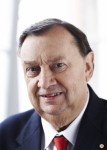
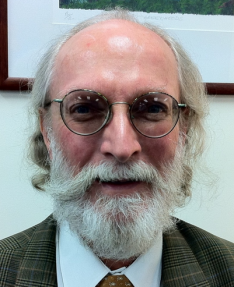
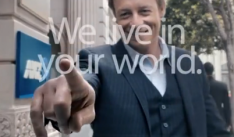

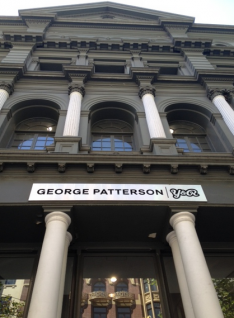
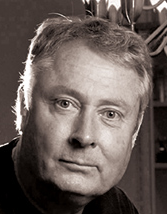


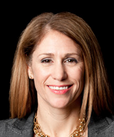

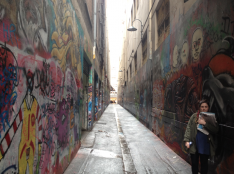


This was a really great read Robin.
“It’s only Melbourne folk who talk about the Sydney rivalry, because they have an inferiority complex,” Very True! Just moved back to Melbourne – “Melbourne people” constantly negative about Sydney where as “Sydney people” are quite positive about Melbourne…. clearly Sydney is a better city, we don’t need to argue that point. From my experience, clients with Melbourne based media agencies, especially digital, are at a huge disadvantage due to the knowledge and talent of digital planning and buying teams in Melbourne.
User ID not verified.
“It’s only Melbourne folk who talk about the Sydney rivalry, because they have an inferiority complex,” . That sums up the whole article. It also sums up the entire Sydney v. Melbourne thing. Sydney doesn’t give a rat’s rear end.
User ID not verified.
For years ans years people wondered why Sydney was the financial capital of Australia.
Was it the favourable tax concessions ( like Maine in the US ) or what ? — a pretty view of the bridge that most Corporates decided to have their Head quarters or Corporate based there ?
Initially it may have been, but that is no longer important as most meidum sized businesses look to right size theiroffice /portfolio by relocating to the burbs to get a better deal.
In this climate of Sovereign insolvency ala GFC version 4 — a pretty view of a bridge won’t cut it.
Melbourne for my money.
User ID not verified.
I have seen Steve Allen quoted numerous times.
I had no idea he would look like that.
User ID not verified.
Next week: Sydney or Perth
User ID not verified.
It’s all about talent, you start your article by highlighting the failures in Melbourne, they failed not becuase of the market, they failed through bad management. It’s Melbourne that doesn’t really give a rats arse about Sydney (I lived in Sydney for 3 years) and looked forward to the return to Melbourne and its Ad Industry Comraderie.
Why is Sydney producing crap work? Because it probably attracts overseas talent who cannot get a job overseas.
Agencies in Melbourne have invested more in breding their own talent, something the surface skimmers in Sydney should consider. Move all the Sydney offices to the REAL suburbs of Sydney, that may put the Ad mob up there in touch with reality and as a result you may see better work.
Anyway, who gives a Rats.
User ID not verified.
get a flood up ya! That’ll separate the men from the boys…
User ID not verified.
Re the GDP figures: around 2008-9, private education was Australia’s third highest GDP and Victoria had the lion’s share. After Rudd wiped hairdressing and cooking off the Permanent Residency qualification for international students, numbers plummeted. This has had a slow but significant impact on the Victorian economy which you can see in the above table. I’ve worked as a creative in Melbourne, Sydney, London and Brisbane and the salary difference doesn’t make sense. Melbourne’s rent has crept up in recent years – 20 years ago it was 20-30% cheaper. More recently the margin has shrunk to 5-10% but the pay scale hasn’t reflected that. I hate Melbourne’s parochial nature and the colder weather but the arts, music and culture wins me over.
User ID not verified.
Well both cities made this list of the “Top 10 Happiest Cities in the World”.
Deservedly too, imho
http://thebat-sf.com/2013/01/3.....the-world/
Interesting article, but I feel some of the sentiment is very 80s.
It’s 2013 and Sydney is not languishing behind Melbourne in the arts or culture stakes.
Statements that Melbourne has the arts and culture imply that Sydney doesn’t, which is remarkably untrue.
When the majority of the nation’s major arts organisations are based in Sydney, and Sydney has produced creative events like Vivid, Crave and the ever impressive Sydney Festival, no one can say that Melbourne’s output is superior. Quite the opposite actually.
There’s also high culture, and ‘real’ culture. Sydney being the more multi-cultural city, the more historical city has a great diversity when it comes to culture and heritage. There’s diversity in the population you won’t find anywhere else in Australia.
I’m not saying Sydney is the greatest… something, or anything.
I agree, Sydney is vacuous and shallow and very try-hard. But you know what, Melbourne can be just as bad.
You are so right when you describe as ironic the claim that Melbourne prides itself on its modesty. It’s so transparent really.
Creativity is not born in a certain place but drawn to where the opportunities are. There is some real creativity and talent in Western Sydney for example, but who’s listening?
User ID not verified.
Why would anyone go to StKilda ‘beach’-let alone take your shirt off when you got there?You’d not only freeze -but .if you were to lie down in the kitty litter that passes for sand you would probably end up with a syringe in your back.
Syd v melb beaches ?Game over!
User ID not verified.
Great article. Having worked in both cities, I definitely agree with the Melbourne inferiority complex. It’s a shame because it’s an amazing city that us Sydneysiders love and can learn a lot from – they don’t need to feel like they have to sell it to as as ‘better than Sydney’.
Funny quote about the guys taking their top of in Bondi as opposed to St Kilda. That also might have to do with the fact that you’d actually swim in Bondi (I lived in St Kilda, would never swim there).
User ID not verified.
If Sydney is the new Melbourne, and Melbourne is the new Adelaide, then Adelaide isn’t even Adeliade anymore.. ouch!
User ID not verified.
It!s, not in the nature of Melburnians to brag.Could have fooled me?Everytime I visit Melbourne ,I’m told ad nauseum that Melbourne is the world’s most liveable city, that Melbourne is the arts,sports,food,music,coffee,etc capital,and,that Melbourne is better than Sydney. Is that not boasting?
User ID not verified.
I wasn’t born in Sydney or Melbourne, and having lived in both for a number of years I have an unbiased opinion of each city.
But where we go wrong, as you so rightly pointed out, is for Melbourne, it seems to be very much Melbourne vs Sydney. For Sydneysiders, it’s very much Sydney vs LA / New York / London / Paris in terms of food, culture, art / events and advertising.
The argument that Melbourne’s creativity is trouncing Sydney doesn’t wash with me either, both cities have their ups and downs. And Sydney has produced a heck of a lot of good work in the last 12 months.
The main difference I found in Melbourne was it felt a little slower, more like a big town than a small city. And that reflects in the lifestyle or the people, you have more time to do things at a relaxed pace, while Sydney is trying to be the next Hong Kong or NYC and everything is due yesterday.
I think Sydney agencies could learn a lot from Melbourne, and treat their staff and suppliers like human beings, promote them to retain talent and demand that their clients do accordingly.
I also think Melbourne could learn a lot from Sydney and stop competing against another city in the same country, instead, compete with the world-class cities (and agencies) in the world.
User ID not verified.
Seriously, these people are so removed from what’s really happening, it’s ridiculous. Melbourne is regarded as one of the best creative scenes globally, & isn’t just about global agencies. Just walk around Cremorne & you’ll know what I mean.
User ID not verified.
I have to agree that Sydney has more arts and culture than Mebourne but that is to be expected as Sydney has a higher multi-cultural population, key cultural events like the Festival of Sydney every January and areas like Walsh Bay the arts and theatre precinct. Melbourne like to crow they are the capital of this and that when in reality Sydney is just as good if not better, Sydney just doesn’t need to crow about it. Sydney is home to Australia’s 4 top 100 restaurants in the world and is the fashion capital and home to most of Australia’s fashion houses and modelling agencies. So when you hear people say Sydney is the 3 F’s – the Finance, Fashion and Food capital of Australia, you can believe it.
User ID not verified.
Sydneysiders participate in the Sydney vs Melbourne debate passively by having their heads stuck up their own asses.
User ID not verified.